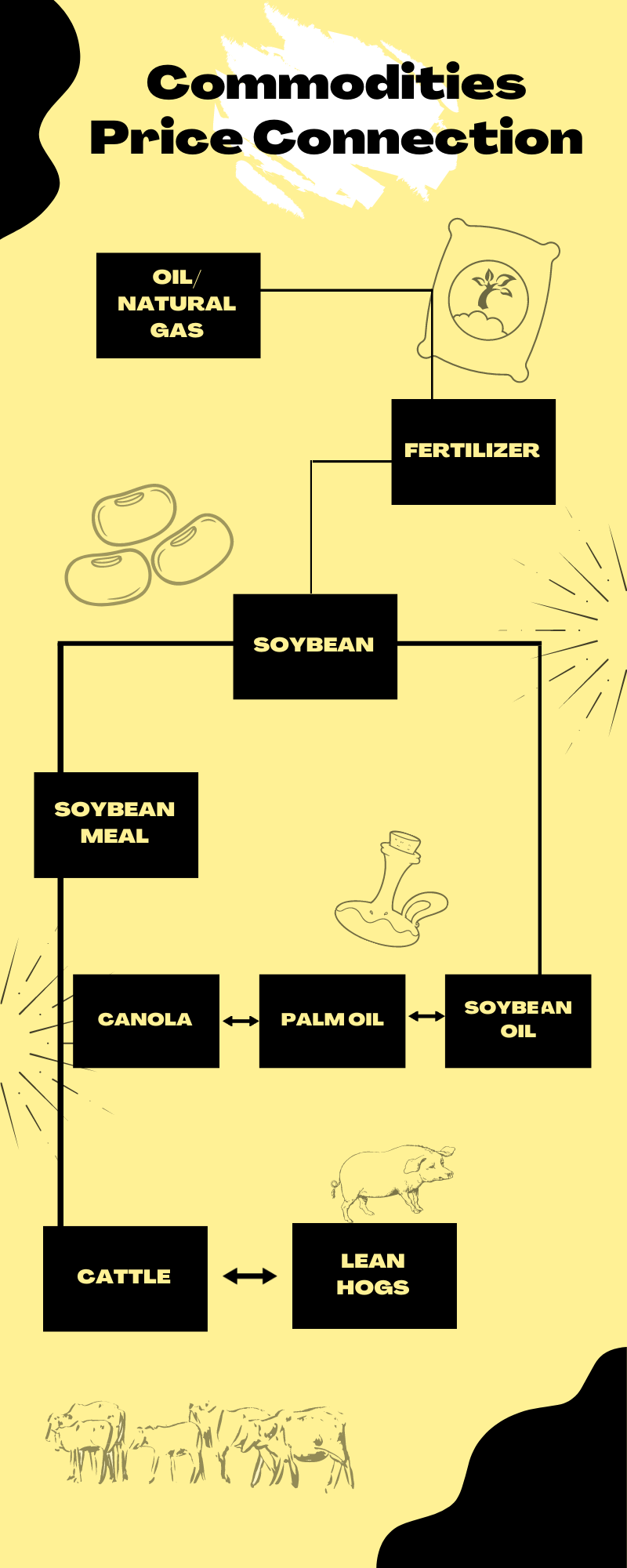
Commodity prices are affected by many other factors than just supply and demand. These include things like weather conditions, government policies, political events, etc. When the price of one commodity goes up, the prices of other commodities go up too. Here is a simple illustration of how the price of commodities affects each other.
Energy price, such as oil prices & natural gas prices is the most important factor that impacts the prices of all other commodities.
Nitrogen fertilizer is produced from natural gas. The crop requires fertilizer to grow well. When natural gas prices are high, the cost of production for crops will increase, leading to an increase in crop prices.
Soybean, which is arguably one of the most important crops, requires a lot of fertilizer to achieve optimal yields. Soybean can be produced into soybean oil and soybean meal. Soybean oil is a cooking oil and soybean meal is used as animal feed.
About 18% of soybeans are oil. It is extracted into soybean oil and used as an ingredient in various dishes and as cooking oil. Once the oil is extracted, the remaining soybean meal is used as animal feed
When soybean price increases, the prices of soybean oil increase too. Palm oil and canola oil, which are substitutes for soybean oil will also see their price rise in tandem with soybean oil.
Soybean meal is used for feeding animals. When the prices of soybean meal increase, the cost to raise an animal will increase. The impact of increased meat prices will not only affects animals that intake soybean meal but any meat that serves as a substitution for protein.
In
conclusion, the price of energy is highly correlated with our food prices. A
sharp movement in oil prices is also accompanied with a sharp movement in soft
commodities’ prices in the same direction.
